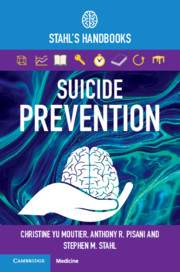Section 3 - Special Topics: Medicolegal Considerations and Specific Populations
Published online by Cambridge University Press: 15 May 2021
- Type
- Chapter
- Information
- Suicide PreventionStahl's Handbooks, pp. 187 - 275Publisher: Cambridge University PressPrint publication year: 2021



